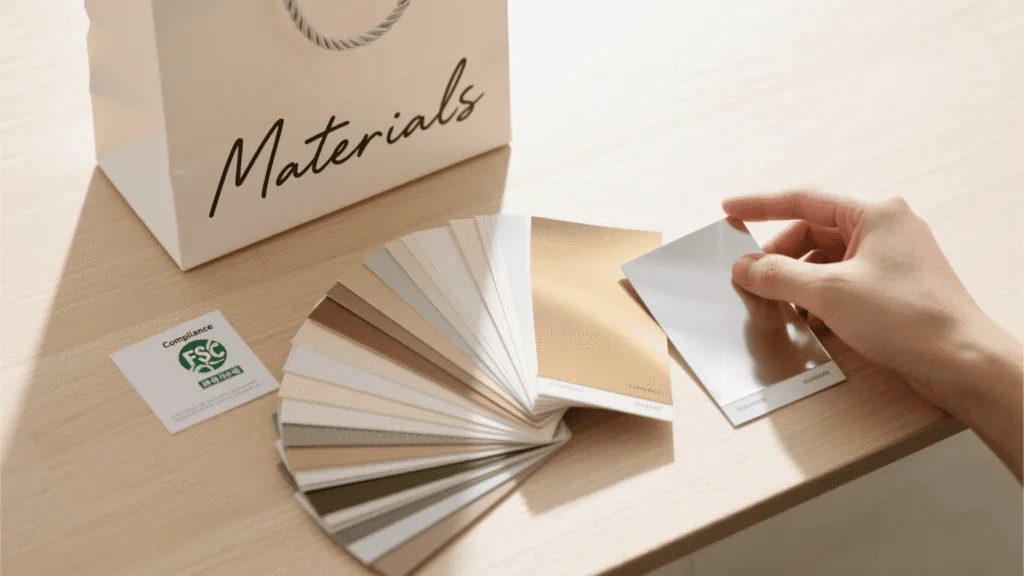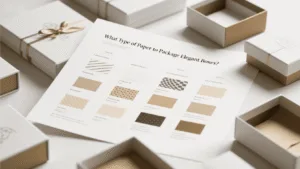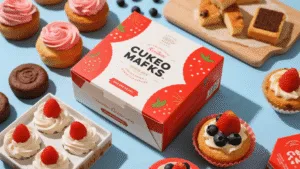You need beautiful retail bags, but the options are overwhelming. Choosing the wrong material or finish can result in wasted budget, damaged products, and a packaging that fails to represent your brand’s quality.
To create the perfect coated paper bag, select a base material like C1S or art paper based on your needs, choose a coating like matte or gloss lamination for aesthetics and durability, and verify that your supplier meets all key environmental and safety compliance standards.
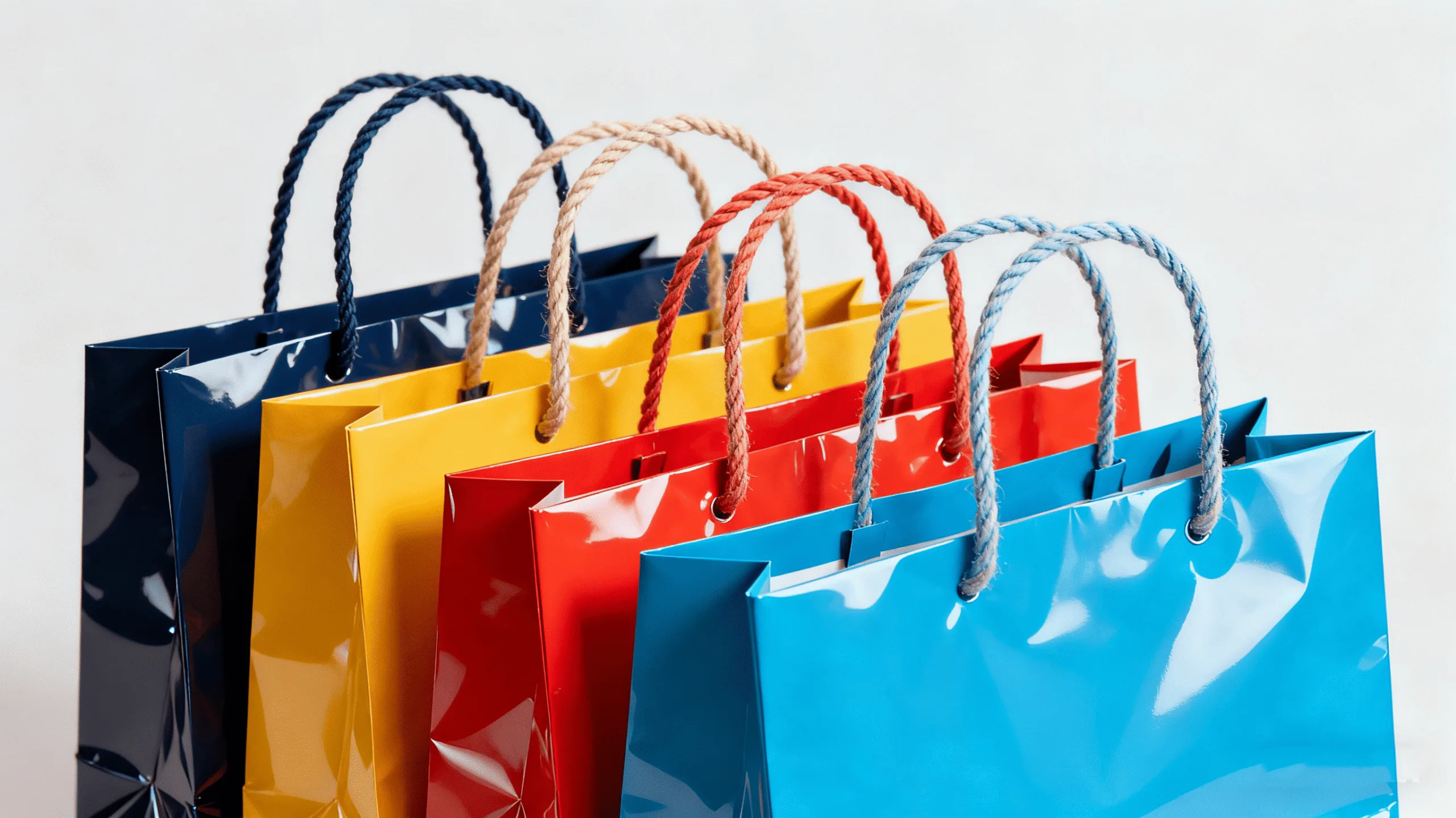
Making the right choices for your packaging is fundamental. I remember working with a new luxury chocolate brand years ago. They were laser-focused on the candy but treated the packaging as an afterthought. They chose a standard, uncoated paper to save money on their first run of food packaging. When the samples arrived, the natural oils from the chocolates had seeped through the paper, creating unsightly grease spots. Their premium product suddenly looked cheap and poorly made. This experience taught me a valuable lesson: the bag isn’t just a container; it’s part of the product experience. Getting the material and coating right from the start protects your product and your brand.
What Are the Best Paper Materials for Your Retail Bags?
Your current bags feel flimsy and cheap, or you’re overpaying for material that’s stronger than you need. You’re losing money and failing to impress customers because you can’t match the paper to the product.
Select the best material by understanding the differences between C1S, C2S (Art Paper), and Kraft Paper. Then, choose the appropriate paper weight (GSM) to balance cost, strength, and the premium feel your brand requires.
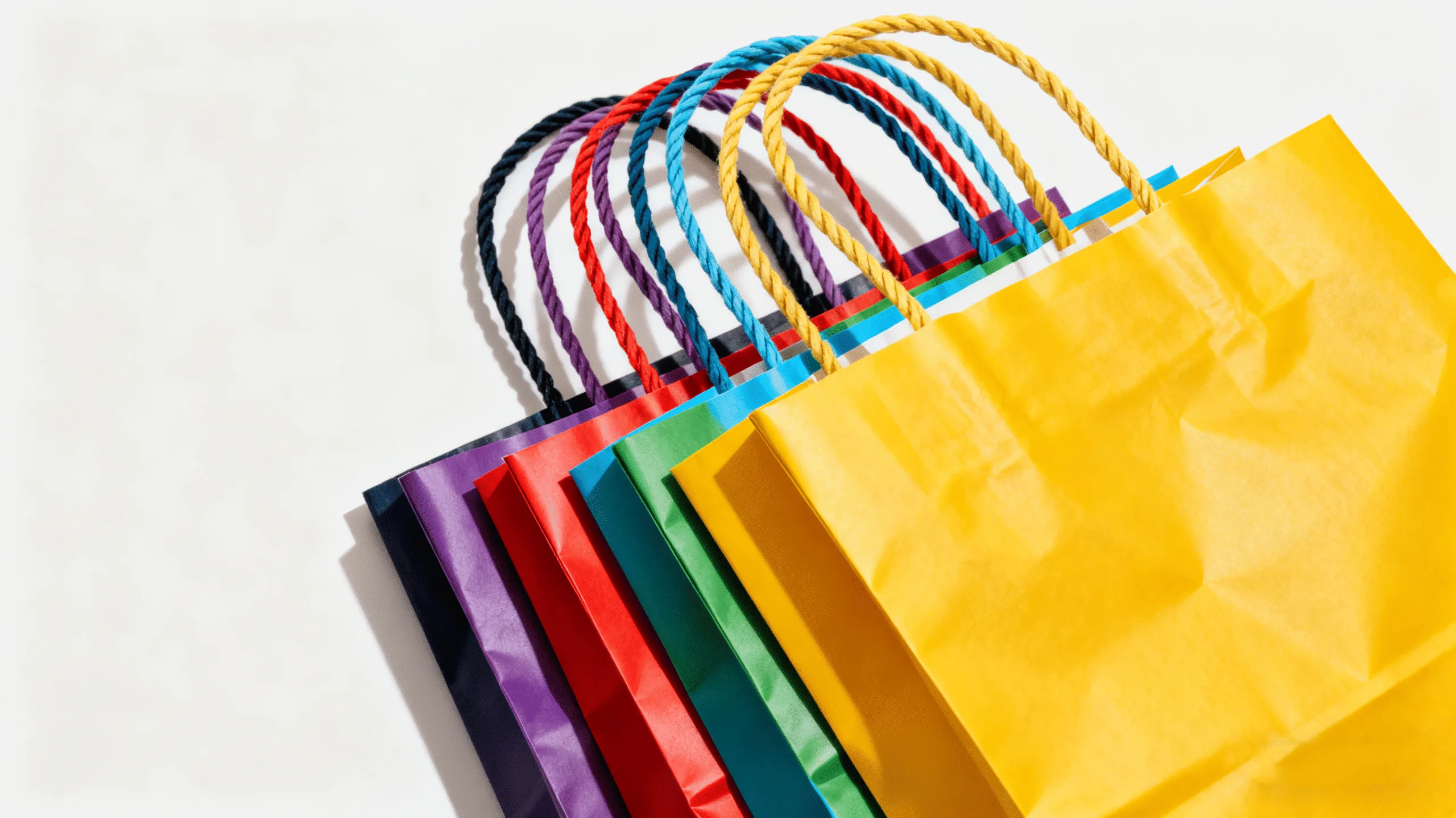
The foundation of any great coated paper bag is the paper itself. The type and weight you choose will dictate everything from print quality to durability and perceived value. It’s a decision that should be directly influenced by what you’re putting inside the bag and the brand image you want to project. For a high-end jewelry packaging solution, a customer expects a bag that feels substantial and luxurious. For a fast-fashion apparel brand, the focus might be more on vibrant printing and cost-effectiveness. Understanding the core paper options is the first step in making an informed decision.
Coated vs. Uncoated Papers
The primary distinction is the presence of a coating applied at the paper mill. Coated papers have a layer of clay or other polymer that fills in the tiny pits and fibers of the paper’s surface. This creates a smoother, less porous surface that is ideal for crisp, high-resolution printing. Uncoated papers1, like standard copy paper, have a more natural, textured feel and are more absorbent. For retail bags where brand imagery and color vibrancy are key, coated papers are almost always the superior choice.
Common Paper Types and Weight (GSM)
Paper weight is measured in Grams per Square Meter (GSM). A higher GSM means a thicker, heavier, and generally more durable paper.
| Paper Type | Print Quality | Feel & Appearance | Common GSM | Best For |
|---|---|---|---|---|
| C1S (Coated One Side) | Excellent | Smooth on the outside for printing, uncoated on the inside. | 170 – 250 GSM | High-end retail, cosmetics, electronics where a premium exterior is key. |
| C2S (Art Paper) | Superior | Smooth and coated on both sides for a consistent finish inside and out. | 157 – 300 GSM | Luxury goods, gift bags, and when interior printing is desired. |
| Kraft Paper | Good (with limitations) | Natural, rustic, and strong. Comes in brown or bleached white. | 100 – 200 GSM | Eco-conscious brands, heavier items, and achieving an organic look. |
Choosing the right GSM is a balancing act. A 157 GSM C2S paper might be perfect for a small, lightweight cosmetic item, but for a heavy winter coat, you’d want to go up to at least 250 GSM to ensure the bag doesn’t tear. As a manufacturer, we help clients navigate this choice, often providing samples so they can feel the difference firsthand. It’s about finding that sweet spot between necessary strength, desired feel, and budget.
How Do Coatings and Finishes Transform Your Coated Paper Bag?
Your retail bag looks dull and blends in with the competition. It lacks the "wow" factor that makes a customer feel they’ve purchased something special, diminishing the perceived value of your product.
Elevate your bag by applying a finish like lamination (matte, gloss, or soft-touch) for a tactile experience and added protection, or use a varnish like Spot UV to create visual contrast and highlight specific design elements.
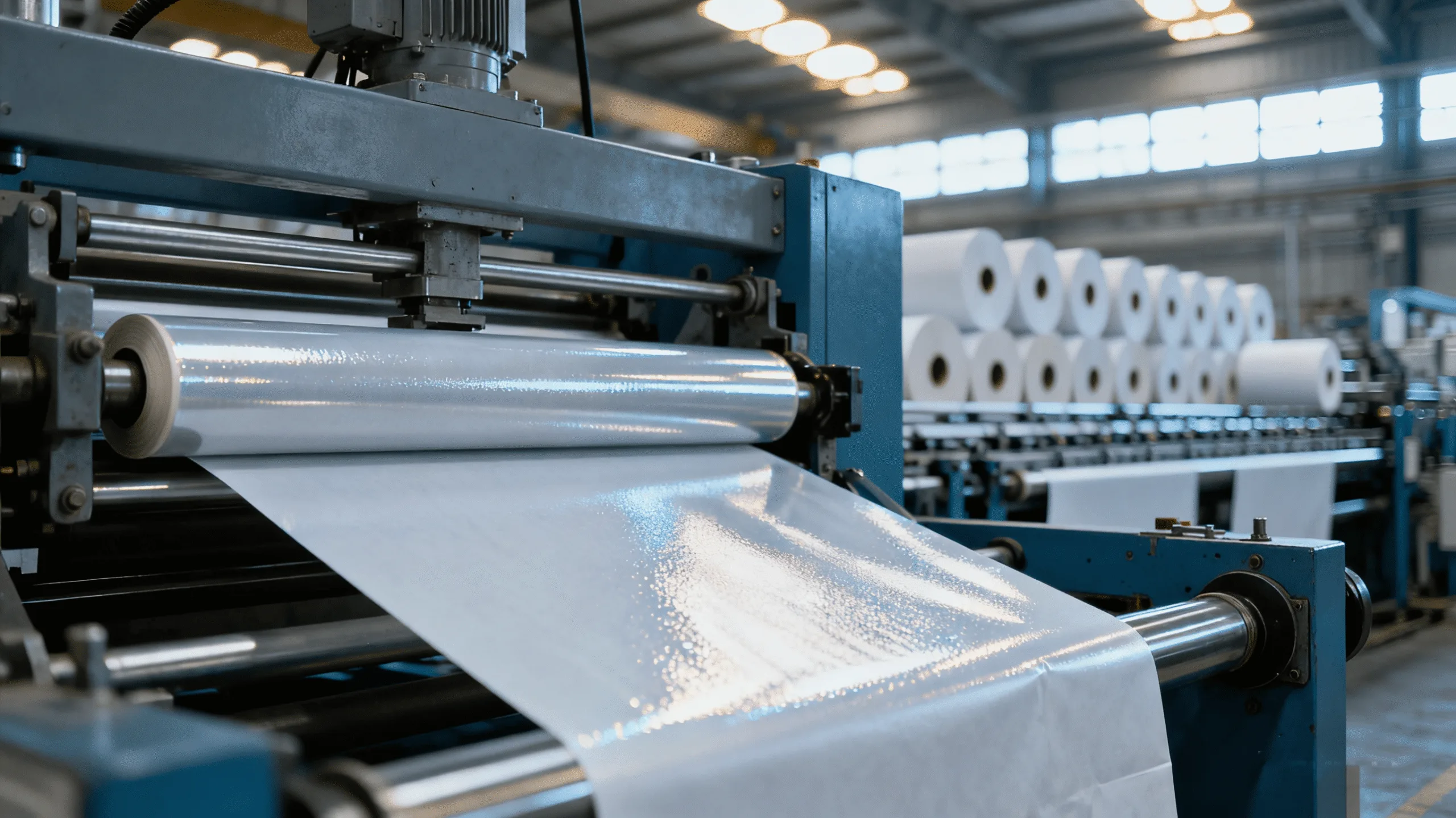
The coating or finish is where you can truly differentiate your brand. It’s the first thing a customer touches and sees up close. This is your opportunity to move beyond a simple printed bag and create a memorable sensory experience. A few years back, we were working with a client on their cosmetic packaging. Their design was elegant, but on standard gloss paper, it just didn’t pop. I suggested we try a sample with a soft-touch lamination. When the client held it, their reaction was immediate. The velvety, suede-like texture instantly conveyed the luxury and quality of the skincare products inside. They understood that the finish wasn’t just a cost—it was an investment in their brand’s story. That small change transformed the entire unboxing experience.
Lamination: Your First Line of Defense and Style
Lamination involves applying a thin plastic film to the paper after printing. It offers excellent protection against moisture and scuffing while dramatically changing the bag’s look and feel.
- Gloss Lamination1: Creates a shiny, high-impact look that makes colors appear more vibrant. It’s easy to clean and very durable, making it a popular and cost-effective choice.
- Matte Lamination: Provides a sophisticated, non-reflective finish. It offers a more subtle and elegant appearance, though it can be more susceptible to showing fingerprints or scratches than gloss.
- Soft-Touch (or Velvet) Lamination: This is a premium matte finish that has a unique, velvety texture. It creates an immediate tactile appeal that signals luxury and high quality.
Varnishes and Special Finishes: Adding Depth and Focus
Unlike lamination, which covers the entire surface, varnishes can be applied to the whole sheet or just to specific areas (Spot UV).
- UV Varnish: A liquid coating cured with ultraviolet light. It can be gloss or matte and provides good protection.
- Spot UV2: This is a powerful design tool. By applying a high-gloss UV varnish to specific elements of a design—like your logo or a pattern—on top of a matte lamination, you create a stunning contrast in both texture and sheen. It draws the customer’s eye exactly where you want it to go.
Combining these finishes, like a soft-touch lamination with a Spot UV logo, is how you create packaging that people don’t want to throw away.
How Do You Ensure Your Coated Paper Bags Meet Compliance Standards?
You’re worried about hidden risks. Sourcing bags without understanding compliance could lead to your products being pulled from shelves, facing fines, or damaging your brand’s reputation with environmentally-conscious consumers.
Ensure compliance by partnering with a certified supplier who can provide documentation for environmental standards like FSC and safety regulations for inks and glues, especially for products intended for food or children.
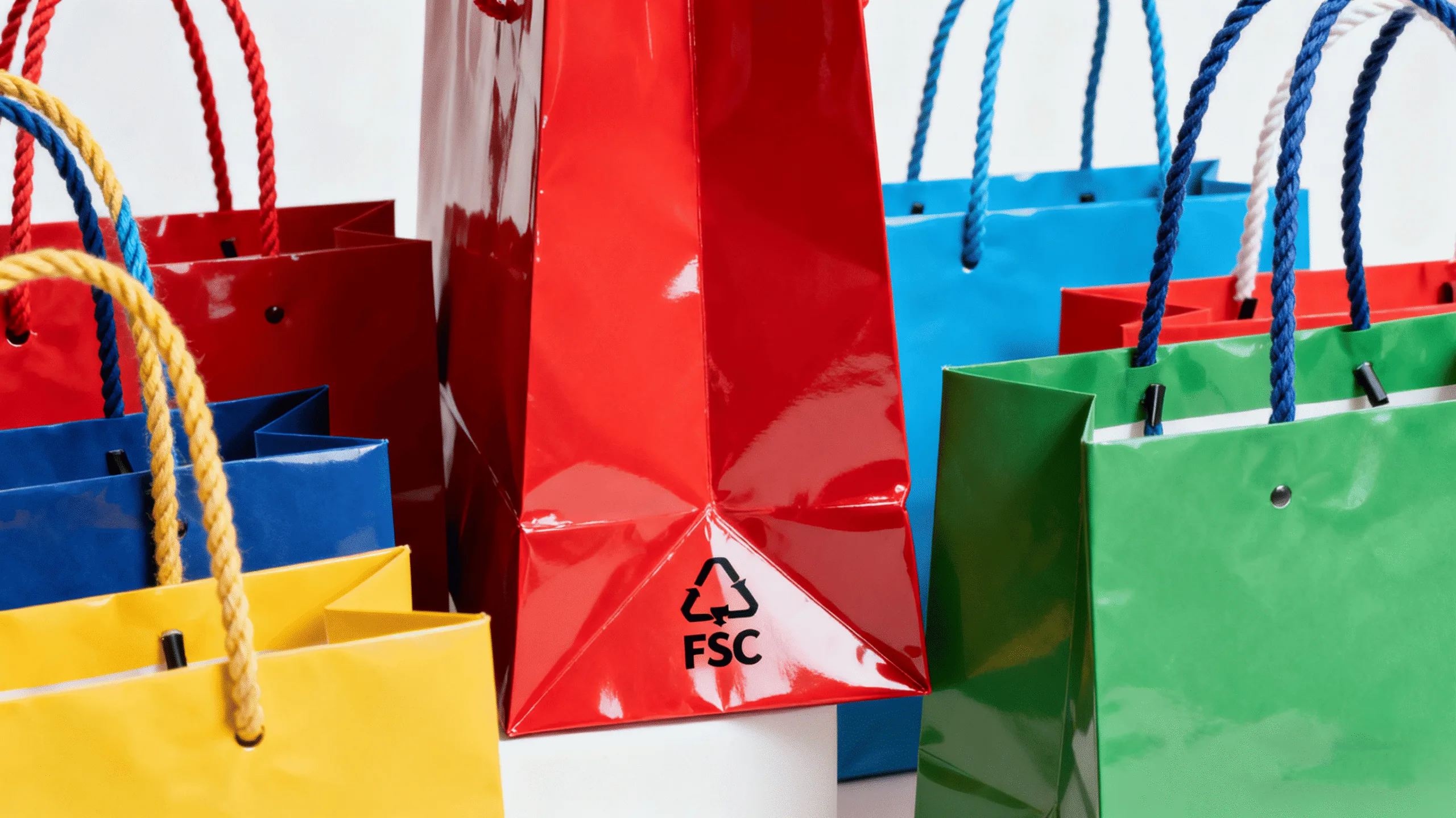
Compliance is the invisible foundation of good packaging. It’s not the most glamorous part of the process, but it is absolutely essential for protecting your business and building trust with your customers. In today’s market, consumers are more informed than ever. They care where their products come from, and that scrutiny extends to the packaging. A claim of being "eco-friendly" is no longer enough; you need the credentials to back it up. Furthermore, product safety regulations are strict and non-negotiable. As the CEO of a global packaging exporter, navigating these complex requirements is a core part of our service at Yiwu Omet Packaging. We ensure our clients’ packaging is not only beautiful but also responsible and safe for market.
Environmental Compliance: Building a Green Reputation
The most recognized standard for paper products is the Forest Stewardship Council (FSC) certification. An FSC logo on your bag is a clear signal to consumers that the paper was sourced from forests that are managed responsibly. A 2021 study showed that 80% of consumers want to see brands use packaging that is environmentally friendly (Source: Trivium Packaging Global Buying Green Report). Choosing an FSC-certified supplier is one of the most credible ways to meet this consumer demand and demonstrate your brand’s commitment to sustainability.
Product Safety Compliance: Protecting Your Customers
If your bag will be used for food packaging or is intended for products aimed at children, safety compliance is paramount. Regulations vary by region, but they generally govern the chemical composition of the materials used. This includes:
- Food-Safe Inks and Adhesives1: Inks and glues must be certified to not migrate harmful substances into the food they may come into contact with.
- Heavy Metal Content: Regulations like the EU’s REACH (Registration, Evaluation, Authorisation and Restriction of Chemicals) set strict limits on heavy metals like lead and cadmium in consumer products and packaging.
Working with a supplier who understands and adheres to these global standards is non-negotiable. A supplier with certifications like BSCI (Business Social Compliance Initiative) also demonstrates a commitment to ethical labor practices in their factories, adding another layer of trust and responsibility to your supply chain.
Conclusion
Choosing the right coated paper bag comes down to three key decisions: selecting the right material and weight, enhancing it with a strategic coating, and ensuring it all meets critical compliance standards. By mastering these elements, your retail bag becomes more than a carrier—it becomes a powerful brand ambassador.
Ready to create retail packaging that stands out for all the right reasons? Contact us today for a design consultation.
For more on packaging production, read our Supply Chain Playbook: Sourcing, MOQ, Lead Times and Quality Checks for Coated Paper Bags.
FAQ
What is GSM in paper, and why is it important for retail bags?
GSM stands for Grams per Square Meter. It’s a measurement of paper density and weight. A higher GSM means thicker, heavier, and more durable paper. It’s important for ensuring your bag has the right strength for your product and conveys the desired level of quality to the customer.
Is gloss or matte lamination better for my brand?
It depends on your brand identity. Gloss lamination offers a shiny, vibrant, and durable finish that makes colors pop. Matte lamination provides a more subtle, sophisticated, and modern look. For luxury brands, a matte or soft-touch finish often feels more premium.
What is FSC certification, and do I need it?
FSC (Forest Stewardship Council) certification verifies that the paper used in your bags comes from responsibly managed forests. While not legally mandatory, it is highly recommended for any brand wanting to demonstrate a commitment to sustainability and appeal to eco-conscious consumers.

